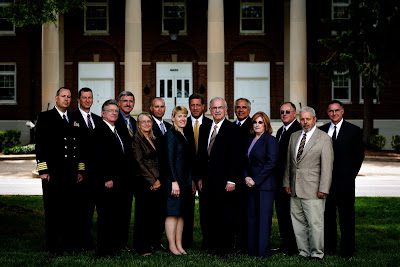During a time of budget cuts, the U.S. Department of Defense’s (DoD) defense acquisition workforce — for which the Defense Acquisition University (DAU) provides training — has stepped up hiring efforts, with a goal to increase the workforce by 20,000, in accord with a growth strategy set by senior leadership. The strategy aims to restore capability and capacity to the workforce, which has shrunk during the last decade.
“DAU played a key role in the department’s efforts to restore the defense acquisition workforce and provided critical training targeting job effectiveness and efficiency to the existing and the new members joining the workforce,” said Chris Hardy, director of the Global Learning and Technology Center at DAU.
The secretary of defense instructed all DoD components and agencies to initiate cost savings. However, DAU was exempt from initial budget reductions.
“[This was] to ensure we are fully invested in the training and education of the very people we depend on to find savings and efficiencies in our acquisition programs every day,” Hardy said. “With quality training, we can save the taxpayer hundreds of millions of dollars and still provide our war fighter with the best equipment and services in the world.”
The workforce has become increasingly dependent on DAU to perform its jobs at a high level. Hardy said learning technologies, tools and methodologies continue to evolve rapidly, and DAU’s learning on demand assets have been integrated into its culture. This is critical because the stakes are so high — DAU’s bottom line is the country’s security.
“The DoD acquisition mission represents the largest buying enterprise in the world,” Hardy said. “Today there are 102 major defense acquisition programs with an investment of more than $1.6 trillion that keep our military second to none [because] in this business we cannot afford to be second. Thus, DAU’s learning and development success will not only have a huge financial impact through smart workforce business process and savings, but will also impact the United States’ capability to defend the free world.”
DAU provides training and learning to a workforce of nearly 152,000 employees, so there’s an ongoing need to recruit, hire, train, develop, retain and reward these individuals.
On-boarding is a key part of the DAU employee life cycle, as it not only influences new employees’ perceptions of the organization, it affords them an opportunity to understand how their jobs contribute to the organization’s mission. That’s why DAU created the A-5 Model: Acquire, Assist, Accumulate, Assimilate and Achieve. The on-boarding program helped to reduce turnover — at 8.4 percent, down from 9.2 percent the prior year. DAU also beat the average hiring cycle time of 45 days set by the OPM, which increased productivity and morale.
“The increased support and interaction continues throughout the new hire’s first year of employment and encourages frequent and regular communication between the new employee and management,” Hardy said.
This enables management to build relationships and solidify employees’ trust while offering opportunities for constant feedback and mentoring. It also ensures that employees are well acclimated to the workplace and culture, and that expectations are clear, concise and achievable.
Climate surveys are conducted to evaluate success. These surveys allow agencies to isolate and address any issues within their purview to continuously improve talent retention. The latest DAU climate survey showed 46 percent of respondents intend to remain at DAU for their career.
“By automating many steps of the on-boarding process to include a post-on-board survey, we are able to analyze, interpret and adapt its enhanced approach to remain competitive in acquiring and retaining top talent,” Hardy said. “One-on-one interviews and focus groups at various milestones during a new hire’s first year of employment provide valuable feedback for further improvements.”
As DAU continues to accumulate accolades, its leadership is committed to maintaining a standard of excellence in the coming years.
“We feel very honored and proud to be recognized again by our peers as a LearningElite organization,” said Katrina McFarland, president of DAU. “It is rare for a government organization to successfully compete with the best from industry; it is even rarer to do it again and again.”
Deanna Hartley is associate editor of Chief Learning Officer magazine. She can be reached at dhartley@CLOmedia.com.















